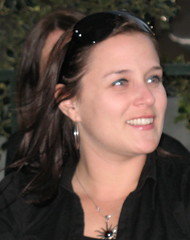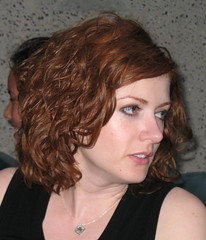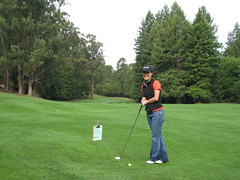Rooting for Stanford University’s football team isn’t quite as futile as being a Cubs fan---Stanford does contend for the Pac-10 title about once a decade---but one must suffer through years of haplessness before enjoying that rare competitive season. 2007 appeared to be no different, with the team not only losing, but getting blown out by opponents.
Wishing to avoid the sight of carnage last Saturday, I stayed away from the TV set. Stanford was visiting college football’s no. 1 team (or no. 2, depending on the poll), USC, on its home turf. Most Cardinal fans would have considered it a satisfying outcome if Stanford could keep USC's margin of victory to three touchdowns. As reporters were fond of
citing in the lead-up to the game:
-- Stanford was a 41-point underdog.
-- Stanford lost 41-3 at home to Arizona State last Saturday.
-- Stanford lost 42-0 at home to USC last year.
-- Stanford was 1-11 last season.
-- USC was 11-2 last season.
To add to the piling on (an expression that is appropriate, for once), Stanford’s starting quarterback was injured, and his replacement,
Tavita Pritchard, was a sophomore who had thrown but three passes in his college career.
It’s unnecessary for me to repeat each play in what is perhaps the most colossal upset in college football history, an upset that has been chronicled elsewhere (see above link to story). The halftime tally was USC 9, Stanford 0, when we entered an East Bay restaurant for dinner. I turned on the car radio as we drove home after, hoping the margin was a respectable three touchdowns or so. It was hard to believe what I was hearing.
USC was still leading by six points at the end, but Stanford had the ball. The Cardinal faced two fourth-and-long-yardage situations in what was clearly the do-or-die final drive. Even the great teams fail in these situations, and we were fully expecting passes to fall harmlessly to earth, Trojan fans to breathe a sigh of relief, and the Cardinal to walk off the field with their heads held high in celebration of a great moral if not actual victory.
But the fairy tale never ended, and Stanford prevailed, 24 – 23.
In 1974 I attended my first and only USC game at the old Stanford Stadium. Both teams were undefeated in the Pac-8, and Palo Altans had deluded themselves into thinking that the home team had a chance to defeat John McKay’s Trojans and even go on to the Rose Bowl. By the end of the first quarter we knew there wouldn’t be a Rose Bowl that year, and by the end of the half the score was something like 30 – 0. Can one game 33 years later dispel that memory?
Yes!By the way, the aforementioned sophomore quarterback, Tavita Pritchard, has an easygoing charisma that leapt off the screen in the post-game interviews. Maybe it’s too early to anoint him as Stanford’s next Brodie, Plunkett, or Elway, but he’s definitely got the right look for Hollywood (Broadway Joe may be a more apt comparison).
© 2007 Stephen Yuen
Left: Keanu Reeves as a quarterback in "The Replacements"
Right: Tavita Pritchard (photos from allmoviephoto.com and gostanford.cstv.com)
 Boston and San Francisco have oft-remarked similarities---a rich maritime history, world-class universities, liberal politics, and leading technology companies, not to mention a big city to the south that dominates the region. But in one respect they are today quite different.
Boston and San Francisco have oft-remarked similarities---a rich maritime history, world-class universities, liberal politics, and leading technology companies, not to mention a big city to the south that dominates the region. But in one respect they are today quite different.















